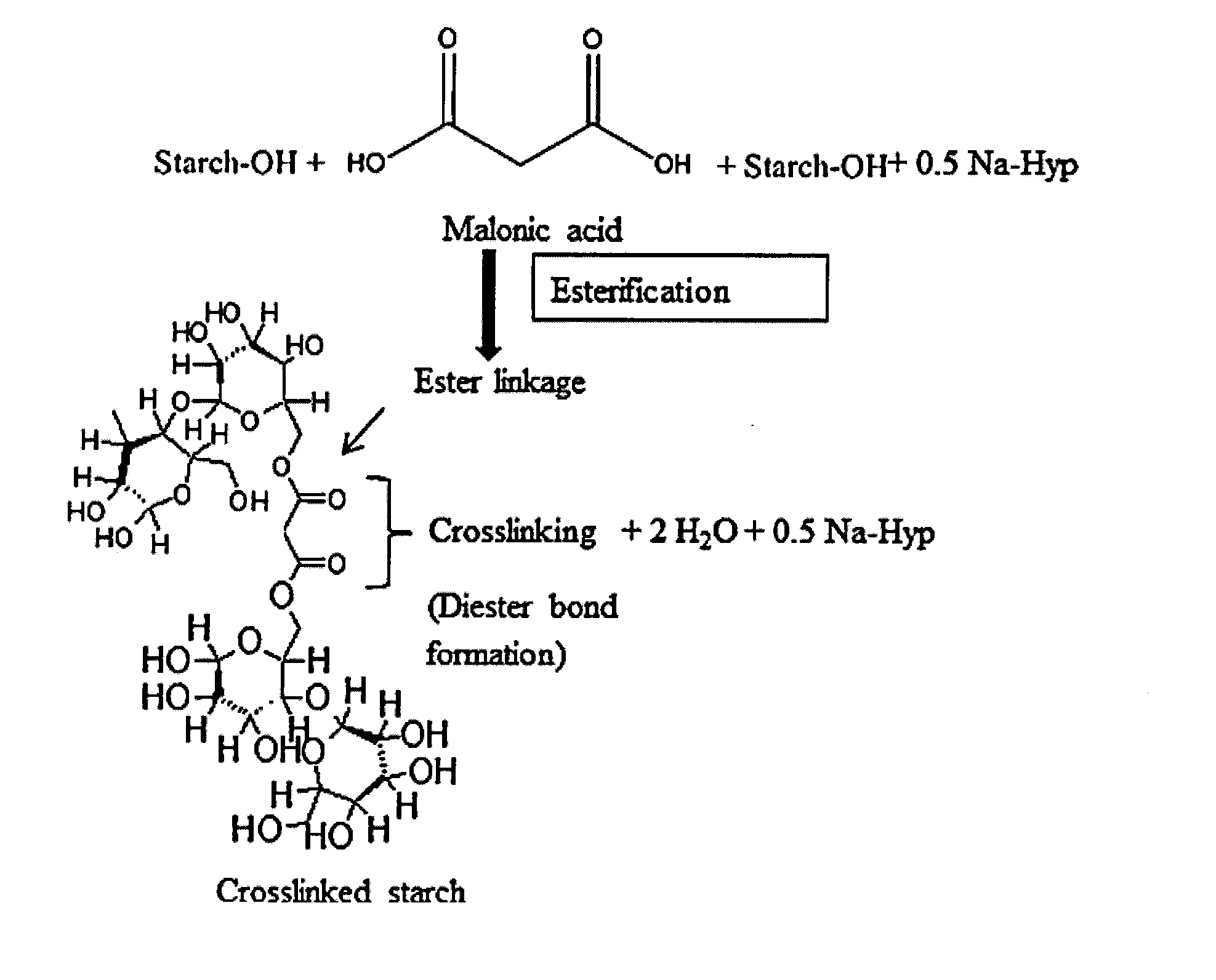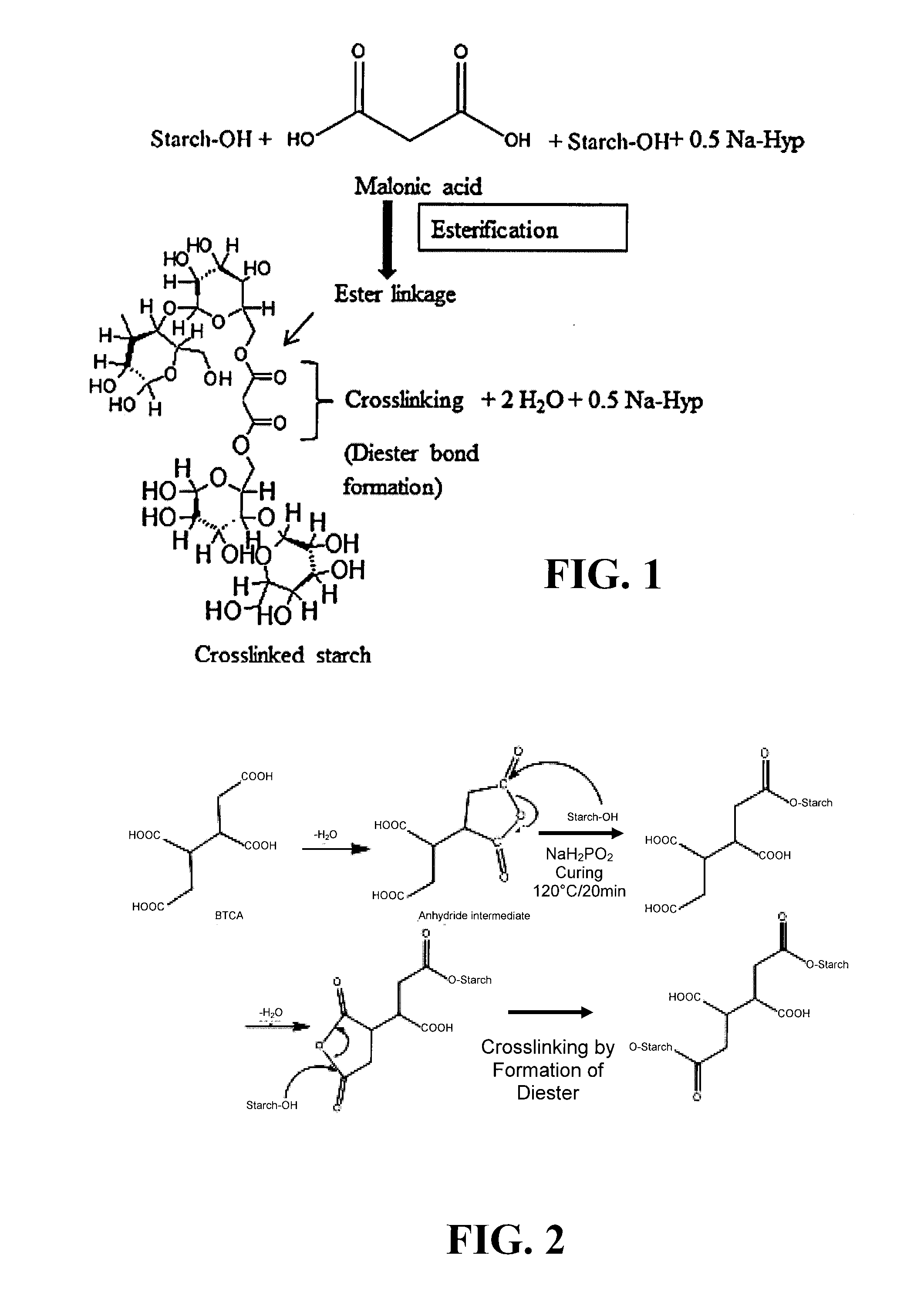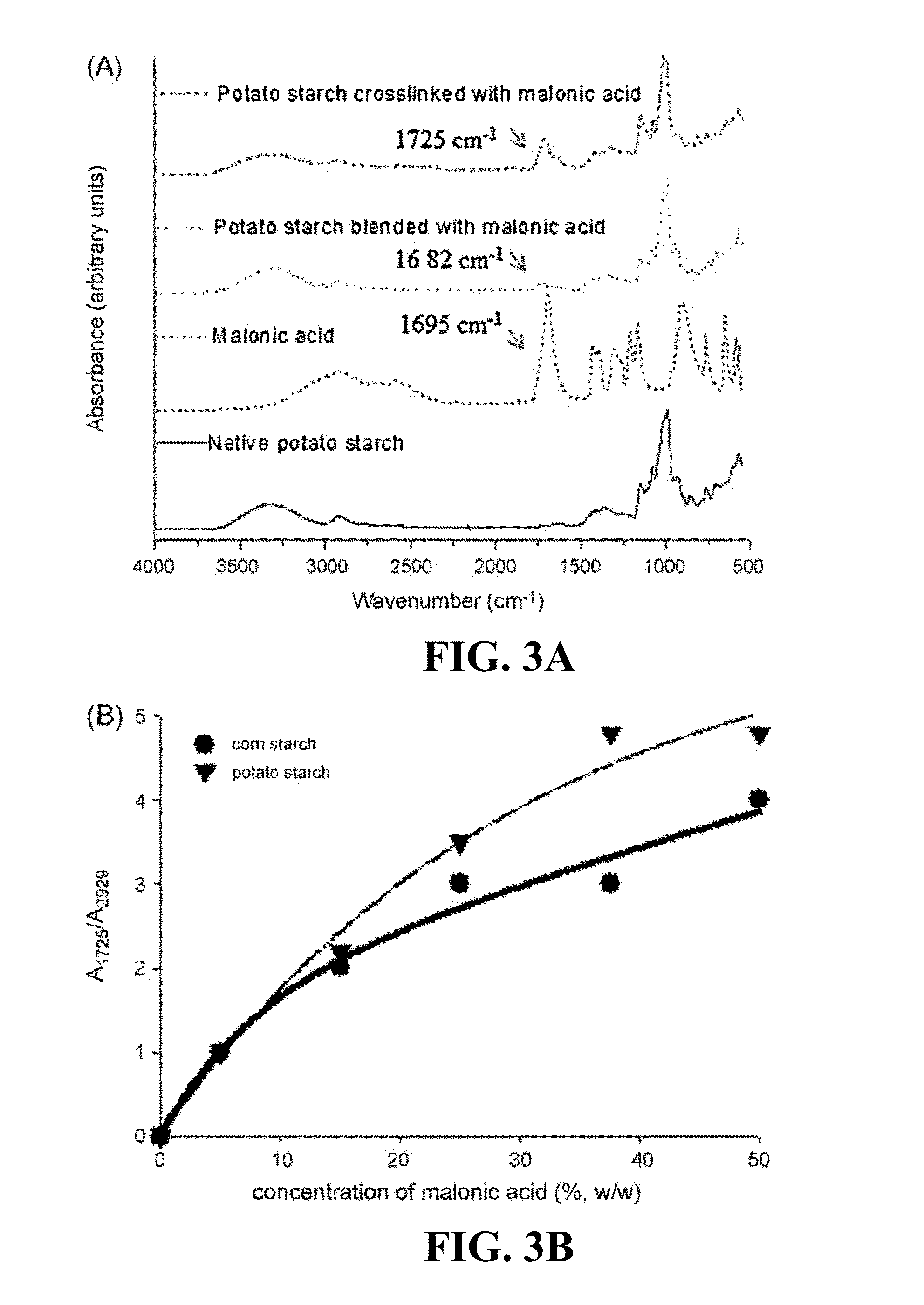Crosslinked native and waxy starch resin compositions and processes for their manufacture
a technology of native and waxy starch and resin composition, which is applied in the direction of adhesive types, cellulose adhesives, coatings, etc., can solve the problems of non-sustainable resource, high turbidity, and more rigid structure, and achieves improved mechanical properties, reduced moisture absorption, and enhanced mechanical properties
- Summary
- Abstract
- Description
- Claims
- Application Information
AI Technical Summary
Benefits of technology
Problems solved by technology
Method used
Image
Examples
example 1
‘Green’ Crosslinking of Native Starches with Malonic Acid and their Properties
[0078]Starch is a highly hydrophilic biomaterial with weak mechanical properties rendering it useless for commercial applications. A fully ‘green’ water based process is presented to crosslink corn (cereal) and potato (tuber) starch to enhance mechanical properties as well as lower hydrophilicity. In addition, malonic acid, a green, plant based water soluble and relatively inexpensive polycarboxylic acid, was used as the crosslinker. The reactivity of potato starch towards esterification and crosslinking was found to be higher than that of corn starch owing to the inherent differences in the granule morphology and internal structure of the two starches. It was observed that potato starch granules had a higher degree of substitution (DS) of 0.19 than corn starch granules (DS=0.1) under similar reaction conditions. Chemical, thermal and mechanical test results confirmed the crosslinking as well as reduced mo...
example 2
Crosslinked Waxy Maize Starch Based on ‘Green’ Composites
[0110]In this example, ‘green’ composites were fabricated by blending waxy maize starch (WMS) with micro / nano fibrillated cellulose (MFC). Further, an environment friendly, sustainable and water soluble crosslinker, 1,2,3,4-Butane Tetracarboxylic Acid (BTCA), was used to crosslink WMS to fabricate crosslinked starch based composites. The method described here provides a benign and convenient way to produce crosslinked starch based composite films (≈300 μm in thickness), comparable to commercially available plastic sheets. The process can be easily scaled up for commercial production. Industrially pregelatinized WMS was used to obtain smooth, transparent and defect-free films. Crosslinking helped in reducing the moisture absorption as well as made the films and composites insoluble in water. MFC (15% MFC)-crosslinked WMS composite films exhibited excellent tensile properties with a Young's modulus of over 2.3 GPa, fracture stra...
PUM
| Property | Measurement | Unit |
|---|---|---|
| temperature | aaaaa | aaaaa |
| temperature | aaaaa | aaaaa |
| pressure | aaaaa | aaaaa |
Abstract
Description
Claims
Application Information
 Login to View More
Login to View More - R&D
- Intellectual Property
- Life Sciences
- Materials
- Tech Scout
- Unparalleled Data Quality
- Higher Quality Content
- 60% Fewer Hallucinations
Browse by: Latest US Patents, China's latest patents, Technical Efficacy Thesaurus, Application Domain, Technology Topic, Popular Technical Reports.
© 2025 PatSnap. All rights reserved.Legal|Privacy policy|Modern Slavery Act Transparency Statement|Sitemap|About US| Contact US: help@patsnap.com



